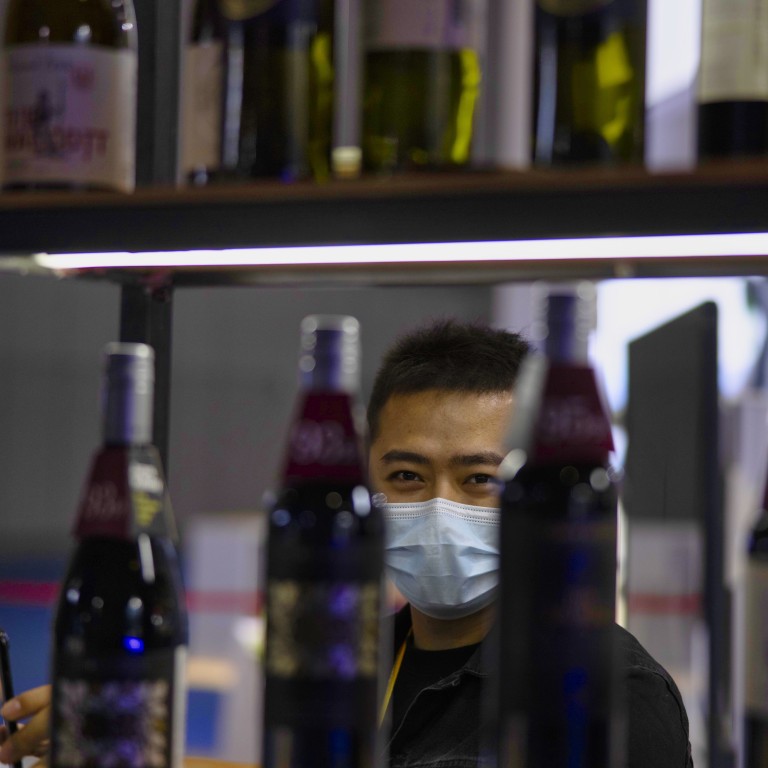
China-Australia relations: more than 11,000 litres of wine detained in Shenzhen as ban continues
- Australian wine from Bunnamagoo Estate and private supplier Lindsdale are the latest batches to be held up at Chinese ports
- The seizures last month came just weeks before China officially slapped anti-dumping duties of up to 218.4 per cent on some Australian wines
Nearly 9,000 litres of red wine from a vineyard owned by renowned Australian pearling company Paspaley Group were detained in south China last month, as Beijing’s block on Australian wine continues amid a protracted dispute between the two countries and new anti-dumping duties on the trade.
Some 8,640 litres from Paspaley’s Bunnamagoo Estate winery and 2,646 litres of red wine from Australian private label supplier Lindsdale were stopped in Shenzhen for poor labelling and excessive use of additives, respectively, Chinese customs data showed.
The seizure is the latest in a string of problems for Australian wine at the Chinese border and underlines Beijing’s message that it no longer wants to buy products from the country, export and import agents in China said.
But it also reflects how lucrative the Chinese market has been for Australian wine producers that, despite an unofficial ban imposed last November and temporary anti-dumping duties put in place last month, many exporters still think they can profit, said Tony Battaglene, CEO of Australian Grape & Wine.
China-Australia relations: do Beijing’s anti-dumping and anti-subsidy investigation claims hold up?
The duties – higher than November’s temporary tariffs of between 107.1 per cent to 212.1 per cent – were applied for five years from last Sunday. The Chinese commerce ministry said the domestic wine industry had been hurt by the dumping of cheap Australian wine.
While the decision was expected, Battaglene said the industry would now focus on driving growth in new and existing markets. Exporters had gained traction in Britain and the domestic market and were pursuing sales across Asia, Europe and the United States, he said.
“Our focus now is twofold. Firstly, we’re working with industry and the Australian government to assess options available to us within the Chinese system, and internationally. And secondly, we’re focusing on growing demand for Australian wine in other markets,” he said.
We continue to reject the allegations levelled against Australian Grape & Wine members
“We continue to reject the allegations levelled against Australian Grape & Wine members and have approached both investigations as collaboratively and transparently as possible.”
“We are assessing options and will make a call next week,” Battaglene said.
The Australian government expressed its disappointment with the anti-dumping decision, the second in the past year after duties were imposed on barley in May last year.
Trade relations have deteriorated sharply between China and Australia after Canberra called for an international inquiry into the origins of the coronavirus pandemic in April last year without consulting Beijing.
The two cases are among four anti-dumping cases Beijing has launched against Australia since 1995. Canberra has instigated 87 anti-dumping cases against China.
Australian trade minister Dan Tehan said the trade disputes were very difficult to navigate.
“We want to have a good working relationship with the Chinese Government. We want to be able to work through these disputes,” he said at a press conference in Australia over the weekend.
“But, as I’ve said, steps taken like this by the Chinese Government are extremely disappointing, and we’ll take all steps we can to try and reverse them.”
For wine exporters, the conflict between China and Australia has been devastating for business, with trade coming to a near complete halt.
Wine Australia, a government authority, said Australia’s ability to find new markets to absorb products usually sold to China would be key to its survival in the next two years. Aside from Britain, there were also good prospects of increased exports to the US, it said.
“In the year ended December 2020, sales of Australian wine increased by 9 per cent in volume in the UK off-trade market, and by 6 per cent in the USA off-trade,” Wine Australia said in a market update on Tuesday.
The real supply pressure will come on towards the end of the year, if we can’t find new markets by then
“The UK and USA markets, as well as the domestic market, have a higher demand for white wine, whereas almost all of Australia’s wine exports to China have been red wine.”
But markets in Britain and US would not replace the large volume of wine sold to China, Battaglene said, adding the severity of the blow in China was softened by low wine stocks.
Wine inventories are at an eight-year low after three years of under-supply, according to Wine Australia.
“The real supply pressure will come on towards the end of the year, if we can’t find new markets by then,” Battaglene said.
Neither Paspaley or Lindsdale responded to requests for comment.



